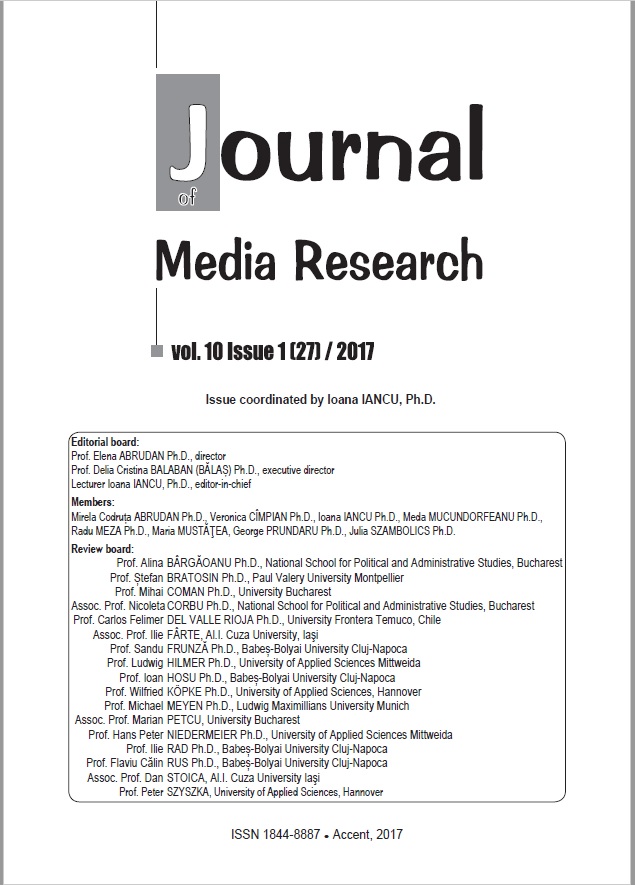Positive and/or Negative Meaning as Style Traits and Strategy Throughout the 2016 American Presidential Campaign — Hillary Clinton and Donald Trump
Positive and/or Negative Meaning as Style Traits and Strategy Throughout the 2016 American Presidential Campaign — Hillary Clinton and Donald Trump
Author(s): Aurelia Ana VasileSubject(s): Social Sciences
Published by: Accent Publisher
Keywords: communication; positive/negative connotation; politics; campaign; discourse
Summary/Abstract: Communication has to do with influence that has impact on thelife of those involved in the communication process, mostly when this communication refers to political campaigning. Inspired by the research on stress performed by the endocrinologist Hans Selye (1974), we aimed at investigating the polarity of meaning in the language of electoral campaign, in order to check if this kind of communication gets more polarized in terms of meaning as the campaign is approaching its end towards the polls. The discourse analysis corpus was that of six comparable Hillary Clinton and Donald Trump transcript excerpts from speeches at various stages earlier and later throughout the campaign for the 2016 presidential elections in the U.S.A. The results of our analysis have shown that Donald Trump’s campaign discourses were generally significantly more polarized than those of Hilary Clinton’s. The most generally polarized discourse was, by far, that of Trump on immigration,and the least generally polarized was Trump’s at an event (Al Smith Dinner). The most positively polarized was Hilary Clinton’s on immigration,and the least positively charged was Trump’s referring to the great leader.The most negatively polarized discourse was Trump’s one on immigration,as it reached more than 10 % of negative words, whereas the least negatively polarized was Hilary Clinton’s on national service.
Journal: Journal of Media Research - Revista de Studii Media
- Issue Year: 10/2017
- Issue No: 27
- Page Range: 23-31
- Page Count: 9
- Language: English
- Content File-PDF

